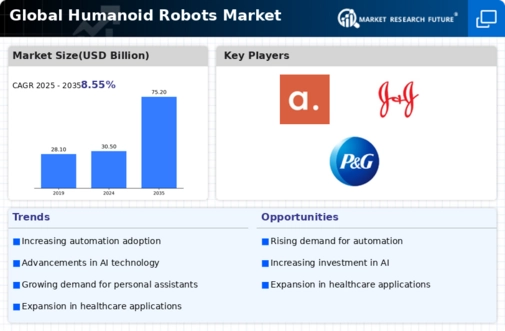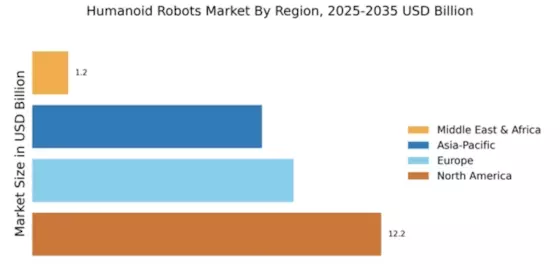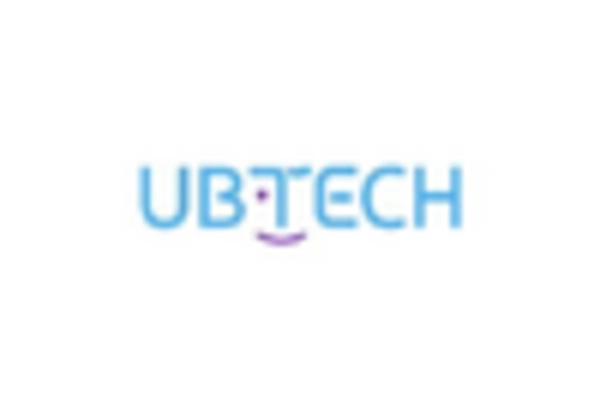Technological Advancements
The Global Humanoid Robots Market Industry is propelled by rapid technological advancements in artificial intelligence and robotics. Innovations in machine learning, computer vision, and sensor technologies enhance the capabilities of humanoid robots, making them more efficient and versatile. For instance, advancements in natural language processing enable robots to interact more seamlessly with humans. As these technologies evolve, they are expected to contribute significantly to the market's growth, with the industry projected to reach 30.5 USD Billion in 2024. This growth reflects a broader trend towards automation and intelligent systems across various sectors.
Market Charts and Projections
The Global Humanoid Robots Market Industry is characterized by various charts and projections that illustrate its growth trajectory. Key metrics indicate a market value of 30.5 USD Billion in 2024, with expectations to reach 75.2 USD Billion by 2035. The compound annual growth rate (CAGR) is projected at 8.55% from 2025 to 2035, highlighting the robust potential for expansion. These visual representations provide insights into market dynamics, trends, and future opportunities, aiding stakeholders in making informed decisions.
Growing Interest in Automation
The Global Humanoid Robots Market Industry is also influenced by the growing interest in automation across various industries. Businesses are increasingly adopting humanoid robots to enhance productivity and reduce operational costs. For instance, companies in manufacturing and logistics are integrating robots for tasks such as assembly and inventory management. This shift towards automation is expected to drive the market's compound annual growth rate (CAGR) of 8.55% from 2025 to 2035. As organizations seek to optimize their processes, the demand for humanoid robots is likely to rise, further solidifying their role in the global economy.
Increased Demand in Healthcare
The Global Humanoid Robots Market Industry experiences heightened demand within the healthcare sector. Humanoid robots are increasingly utilized for patient care, rehabilitation, and assistance in medical procedures. For example, robots like ASIMO and Pepper are being deployed in hospitals to assist staff and improve patient interactions. This trend is likely to continue, as the aging population necessitates innovative solutions for healthcare delivery. The market is expected to expand significantly, with projections indicating a growth to 75.2 USD Billion by 2035, driven by the need for efficient healthcare solutions.
Rising Investment in Research and Development
Investment in research and development is a crucial driver for the Global Humanoid Robots Market Industry. Governments and private entities are increasingly funding projects aimed at advancing humanoid robotics. This investment fosters innovation and accelerates the development of new technologies, which can enhance the functionality and applicability of humanoid robots. For instance, initiatives in various countries focus on creating robots that can perform complex tasks in unpredictable environments. As R&D continues to flourish, the market is poised for substantial growth, reflecting the commitment to advancing robotics technology.
















